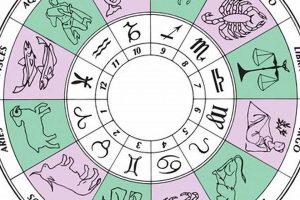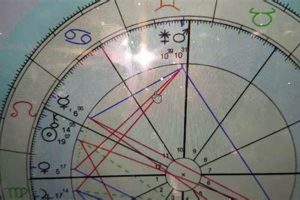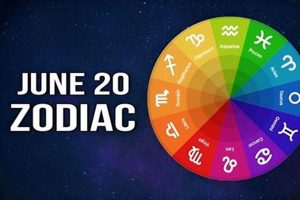In astrological practice, determining Juno’s placement in a birth chart involves utilizing astronomical data and astrological software or tables. This placement reveals the asteroid’s position within the zodiac at the moment of birth. For example, someone might have Juno in Libra in the seventh house. This specific location is then interpreted to understand potential influences on relationships, commitment, and values related to partnerships.
Understanding the position of this celestial body provides insights into an individual’s approach to committed relationships, marriage, and long-term partnerships. It illuminates potential patterns, strengths, and challenges within these areas. Historically, Juno, as a Roman goddess, represented marriage, and her astrological counterpart offers a nuanced perspective on the dynamics of relationships beyond the traditional interpretations of Venus and Mars. This information can be valuable for self-awareness and personal growth.
This exploration will further delve into the interpretation of Juno in different signs and houses, its aspects with other planets, and its significance in synastry (comparing two birth charts). It also examines the historical and mythological context of Juno to provide a comprehensive understanding of this astrological archetype.
Tips for Utilizing Juno’s Placement in Astrological Interpretation
These tips offer guidance for incorporating Juno’s placement into astrological analysis, allowing for a deeper understanding of relationship dynamics and personal values.
Tip 1: Accurate Birth Data: Ensure precise birth time, date, and location are used for chart calculation, as even slight discrepancies can affect Juno’s placement and subsequent interpretation.
Tip 2: Consider the Sign: Analyze the zodiac sign Juno occupies. Juno in Aries, for instance, may suggest a desire for independence within relationships, while Juno in Cancer might indicate a need for emotional security.
Tip 3: House Placement Significance: Examine the house Juno resides in. Juno in the seventh house emphasizes the importance of committed partnerships, while Juno in the fourth house may highlight family and home values within relationships.
Tip 4: Aspects to Other Planets: Investigate aspects between Juno and other planets. A conjunction with Venus might enhance romantic ideals, whereas a square to Saturn could indicate challenges or limitations in committed relationships.
Tip 5: Synastry Comparisons: Compare Juno placements in two individual’s birth charts (synastry) to understand relationship dynamics and potential areas of harmony or conflict.
Tip 6: Juno’s Mythology: Research the mythology of Juno, the Roman goddess of marriage and protector of women, to gain a deeper understanding of the archetypes influence on relationships.
Tip 7: Lifelong Exploration: Recognize that Junos influence can evolve throughout life. Reflect on past relationships and observe how Junos themes manifest in current and future partnerships.
By considering these tips, individuals can gain valuable insights into their relationship patterns, core values, and the dynamics they seek in long-term partnerships. This understanding can facilitate personal growth and contribute to more fulfilling relationships.
In conclusion, incorporating Juno’s placement in astrological analysis offers a rich and nuanced perspective on the complexities of committed relationships and personal values.
1. Birth Date
Birth date plays a crucial role in calculating Juno’s astrological placement. It serves as a foundational element, alongside birth time and location, in determining the precise position of celestial bodies at the moment of birth. This information is then used in astrological calculations, including those for Juno, which reveal its sign, house, and aspects to other planets. The birth date essentially sets the stage for the entire astrological chart, acting as a timestamp of the planetary alignment.
For instance, two individuals born on different dates will have different Juno placements, even if their birth times and locations are similar. Someone born on January 1st, 1990, might have Juno in Sagittarius, while someone born a month later, on February 1st, 1990, could have Juno in Capricorn. This difference in placement significantly alters the interpretation of Juno’s influence on their respective approaches to relationships, commitment, and values. Without the accurate birth date, pinpointing Juno’s position and understanding its implications becomes impossible.
Accurate birth date information is therefore essential for any astrological calculation, especially when determining Juno’s influence on an individual’s life. It provides the necessary framework for understanding the nuances of Juno’s expression, contributing to a more complete and accurate astrological interpretation. This precision enables valuable insights into relationship dynamics, personal values, and potential patterns in partnerships. Understanding the significance of the birth date emphasizes the importance of accurate data for a reliable astrological analysis.
2. Birth Time
Birth time holds significant weight in accurately calculating Juno’s astrological placement. Similar to longitude specifying location on Earth’s East-West axis, birth time determines the specific degree of the rising sign and the cusp of the first house, impacting the placement of all subsequent houses in a birth chart. Because Juno, like other celestial bodies, moves across the sky throughout the day, variations in birth time, even as small as a few minutes, can shift its house position and sometimes even its sign. This precision affects the interpretation of its influence on partnerships, values, and commitment.
Consider two individuals born on the same date and in the same location, but at different times. One born at 6:00 AM might have Juno in the seventh house, emphasizing the importance of committed relationships in their life. The other, born at 10:00 AM, might have Juno in the eighth house, suggesting a focus on shared resources and intimacy within partnerships. This difference, stemming solely from birth time variation, illustrates its crucial role in accurately interpreting Juno’s influence. Without precise birth time data, the resulting astrological portrait lacks the necessary detail for a comprehensive understanding of Juno’s impact.
Accurate birth time is thus paramount for calculating Juno’s astrological position and interpreting its effects. Challenges arise when birth times are unknown or recorded inaccurately. Rectification techniques, utilizing past events to refine birth time estimates, can sometimes be employed to address this issue. However, possessing a documented and accurate birth time remains the most reliable approach for a complete and precise understanding of Juno’s influence within an individual’s astrological profile. This precision unlocks valuable insights into relationship dynamics, personal values, and the overall expression of this important asteroid in one’s life.
3. Birth Location
Birth location plays a vital role in accurately calculating Juno’s astrological placement. Similar to how latitude pinpoints a position on Earth’s North-South axis, birth location determines the Midheaven (MC) and Imum Coeli (IC), the highest and lowest points in the chart, respectively. These angles, along with the Ascendant and Descendant, form the foundation of the house system, dividing the birth chart into twelve segments. Because Juno’s house placement is crucial for interpreting its influence, an accurate birth location is essential.
- Longitude and the Midheaven (MC):
Longitude directly impacts the calculation of the Midheaven (MC). The MC represents one’s public image, career aspirations, and life goals. Juno’s placement relative to the MC, influenced by longitude, provides insights into how these areas intersect with relationship values and commitment. For instance, someone born with Juno conjunct the MC might prioritize partnerships that support their career ambitions.
- Latitude and the Ascendant:
Latitude influences the calculation of the Ascendant, the sign rising on the eastern horizon at the moment of birth. The Ascendant represents one’s outward personality and how one approaches the world. The relationship between Juno and the Ascendant, impacted by latitude, reveals how relationship values integrate with self-expression. An individual born with Juno square the Ascendant, for example, might experience some tension between personal desires and relationship needs.
- House Placement Variations:
Even a slight difference in birth location can alter Juno’s house placement. Imagine two individuals born on the same date and time, but in different cities. One might have Juno in the fifth house (romance, creativity), while the other has Juno in the sixth house (daily routines, service). This variation, resulting from the change in location, leads to distinct interpretations of how Juno’s influence manifests in their lives.
- Global Positioning and Astrological Accuracy:
Accurate birth location data, including city, state/province, and country, is fundamental for precise astrological calculations. Modern technology and digital mapping tools aid in determining precise coordinates, enhancing the accuracy of Juno’s placement and subsequent interpretations. This precision allows for a more nuanced understanding of its impact on an individual’s life.
In conclusion, birth location is not a mere geographical detail but a critical factor in calculating Juno’s astrological position and interpreting its influence. It shapes the house system, directly impacting Juno’s house placement, and indirectly influencing its aspects to other planets. This interplay between geographical location and celestial positions underscores the interconnectedness within astrology and emphasizes the need for accurate birth information for a comprehensive and reliable astrological analysis.
4. Astrological Software
Astrological software serves as an indispensable tool for calculating Juno’s placement and interpreting its influence within a birth chart. While traditional methods involving ephemerides and manual calculations are possible, software streamlines the process, providing accurate and efficient results. Understanding the capabilities and functionalities of astrological software is essential for effectively utilizing Juno in astrological analysis.
- Data Input and Chart Generation:
Astrological software requires precise birth datadate, time, and locationas input. Upon entry, the software generates a visual representation of the birth chart, including Juno’s position within the zodiac, its house placement, and aspects to other planets. This visual representation simplifies the analysis process, providing a clear overview of Juno’s placement within the overall astrological context.
- Ephemeris Integration and Accuracy:
Software integrates astronomical data from ephemerides, which are tables detailing the positions of celestial bodies at various points in time. This integration ensures accurate calculation of Juno’s position, crucial for reliable interpretation. The software automates complex calculations, minimizing potential errors associated with manual calculations and providing a precise placement of Juno for analysis.
- Aspect Calculation and Interpretation:
Beyond simply locating Juno, astrological software calculates its angular relationships (aspects) with other planets. These aspectsconjunctions, oppositions, squares, trines, sextilesadd layers of nuance to Juno’s interpretation, revealing its interplay with other astrological influences. Software often provides interpretations of these aspects, offering insights into potential challenges and opportunities related to Juno’s themes.
- Synastry and Relationship Analysis:
Many astrological software programs facilitate synastry, the comparison of two birth charts. This functionality allows astrologers to analyze the interaction between Juno placements in two individuals’ charts, illuminating potential dynamics within their relationship. Software can highlight harmonious and challenging aspects between Juno and other planets in both charts, providing a deeper understanding of relationship compatibility.
In summary, astrological software significantly enhances the process of calculating Juno’s placement and interpreting its influence. Its capabilities streamline complex calculations, provide visual representations of the birth chart, and facilitate synastry comparisons. Leveraging these tools empowers astrologers and individuals to gain a more comprehensive understanding of Juno’s role in relationships, values, and commitment, leading to more insightful astrological analysis.
5. Ephemeris Data
Ephemeris data forms the bedrock of calculating Juno’s astrological placement. An ephemeris is a table listing the calculated positions of celestial bodies at specific intervals. For astrological purposes, this data provides the precise location of Juno in the zodiac at any given moment. Without accurate ephemeris data, pinpointing Juno’s position in a birth chart, and therefore interpreting its influence, becomes impossible. Essentially, ephemerides act as astronomical maps, guiding astrologers in locating Juno and other celestial bodies. For instance, an ephemeris for the year 1985 would reveal that Juno was at 15 degrees of Libra on March 1st. This specific information is crucial for anyone born on that date, as it places Juno in their natal chart, allowing for analysis of its impact on their relationships and values.
The practical significance of this connection lies in the ability to accurately interpret Juno’s influence. By utilizing precise ephemeris data within astrological software or through manual calculations, astrologers can determine Juno’s sign, house placement, and aspects to other planets. This information forms the basis for understanding how Juno impacts an individual’s approach to commitment, partnership dynamics, and core values within relationships. For example, knowing Juno’s exact position can reveal whether it forms a challenging square aspect to Saturn, potentially indicating limitations or obstacles within relationships. Alternatively, a harmonious trine to Venus might suggest an ease and grace in expressing affection and building lasting partnerships. These nuances, derived from accurate ephemeris data, provide valuable insights into an individual’s relationship patterns and potential.
In conclusion, ephemeris data is an indispensable component of calculating Juno’s astrological placement. It provides the foundational information necessary for accurately determining Juno’s position in the zodiac at any given moment. This precision, in turn, allows for a nuanced and insightful interpretation of Juno’s influence on an individual’s life, particularly within the realm of relationships and values. Understanding this connection underscores the importance of accurate astronomical data in astrological practice and highlights the crucial role of ephemerides in unlocking the insights offered by Juno’s placement in a birth chart.
6. Juno's Glyph
Juno’s glyph, a symbolic representation of the asteroid, plays a crucial role in “calculate Juno astrology.” Understanding this symbol is essential for visually identifying Juno within a birth chart and interpreting its significance. The glyph acts as a visual shorthand, encapsulating the essence of Juno’s astrological influence on partnerships, commitment, and values.
- Visual Representation:
Juno’s glyph resembles a stylized combination of a cross and a circle. The cross, representing matter and groundedness, sits atop a circle, symbolizing spirit and eternity. This fusion visually conveys Juno’s association with both the material and spiritual aspects of committed relationships. Recognizing this symbol within a chart allows for quick identification of Juno’s position and its connection to other astrological elements.
- Symbolism and Interpretation:
The glyph’s components carry symbolic weight. The cross suggests the realities and responsibilities inherent in partnerships, while the circle represents the enduring nature of committed bonds and the spiritual connection sought within them. This symbolism informs the interpretation of Juno’s placement, suggesting themes of balance, commitment, and the intertwining of practical matters with deeper emotional and spiritual needs in relationships.
- Distinguishing from Other Glyphs:
Juno’s glyph can be easily confused with other astrological symbols, especially those of planets like Jupiter or Pluto. However, careful observation reveals key differences. Jupiter’s glyph incorporates a crescent shape, while Pluto’s includes a downward-pointing arc. Accurate identification of Juno’s glyph ensures correct interpretation of its influence and avoids potential misattributions of planetary energies. This distinction is critical for a precise astrological reading.
- Practical Application in Chart Analysis:
Once located within a birth chart using astrological software or an ephemeris, Juno’s glyph becomes a focal point for interpretation. Its position in a specific sign and house, along with its aspects to other planets, provides insights into an individual’s approach to relationships, commitment style, and the values sought in long-term partnerships. For example, Juno conjunct Venus might suggest an emphasis on harmony and affection in relationships.
In conclusion, Juno’s glyph acts as more than just a symbol; it serves as a key to unlocking deeper understanding within “calculate Juno astrology.” By recognizing and interpreting this symbol, one gains valuable insights into the dynamics of committed relationships, individual values, and the potential for growth within partnerships. The glyph bridges the gap between astronomical data and astrological interpretation, providing a visual anchor for understanding Juno’s complex influence on one’s life.
7. Zodiacal Position
Juno’s zodiacal position, determined through accurate birth date, time, and location, is fundamental to “calculate Juno astrology.” This placement reveals the sign Juno occupied at the moment of birth, providing crucial insights into how its themes of commitment, partnership, and values manifest in an individual’s life. Understanding this connection is essential for interpreting Juno’s influence within a birth chart.
- Sign Influence on Juno’s Expression:
The zodiac sign coloring Juno’s energy acts as a lens through which its themes are expressed. Juno in Aries, for example, suggests a desire for independence and assertive action within relationships, potentially valuing direct communication and shared adventures. Conversely, Juno in Pisces might indicate a yearning for deep emotional connection and spiritual merging with a partner, valuing empathy, compassion, and unconditional love. Each sign imbues Juno with its unique characteristics, shaping how these relationship dynamics unfold.
- Compatibility and Synastry Insights:
Juno’s zodiacal position plays a significant role in synastry, the comparison of two birth charts to assess relationship compatibility. For example, individuals with Juno in compatible signs, such as Gemini and Libra, might find ease in communication and shared intellectual interests. Challenging aspects between Juno placements in different charts, such as a square between Juno in Capricorn and Juno in Aries, could indicate potential conflicts related to control, independence, and differing approaches to responsibility within the relationship.
- Evolution and Transit Interpretations:
While Juno’s natal position reveals core relationship values, its influence evolves throughout life. Astrologers track Juno’s transitsits current movement through the zodiacto understand its ongoing impact. For instance, when transiting Juno forms an aspect to natal Venus, it can signify a period of increased focus on romantic relationships or artistic expression within existing partnerships. These transits offer insights into evolving relationship dynamics and potential turning points.
- Integration with Other Astrological Factors:
Juno’s zodiacal position is one piece of a complex astrological puzzle. Its sign placement interacts with other astrological factors, such as house placement and aspects to other planets, to create a complete picture. Juno in Taurus in the seventh house, for instance, might suggest a strong desire for stability and security within partnerships, potentially valuing shared resources and long-term commitment. A square to Uranus could introduce an element of unpredictability or a need for freedom within this otherwise grounded approach to relationships.
In summary, Juno’s zodiacal position is integral to “calculate Juno astrology.” It provides the foundational understanding of how Juno’s archetypal energy expresses itself through the lens of a specific zodiac sign. This understanding, when integrated with other astrological factors and applied to synastry and transit interpretations, offers valuable insights into the complexities of relationships, commitment, and individual values, allowing for a more nuanced and comprehensive understanding of one’s relational landscape.
Frequently Asked Questions
This section addresses common inquiries regarding Juno’s astrological significance, aiming to clarify its role in relationship analysis and personal growth.
Question 1: How does Juno differ from Venus in astrological interpretation?
While Venus represents romantic attraction and the experience of love, Juno signifies the archetype of committed partnership, highlighting the dynamics of long-term relationships, marriage, and the values sought in a life partner. Juno provides insights into the qualities one seeks for a lasting bond, whereas Venus focuses on the initial stages of attraction and the expression of affection.
Question 2: Is Juno’s influence limited to romantic relationships?
Though primarily associated with romantic partnerships, Juno’s influence extends to other forms of committed relationships, including business partnerships, close friendships, and familial bonds. It reveals the dynamics of power, equality, and commitment within these connections.
Question 3: Can Juno’s placement indicate potential relationship challenges?
Juno’s aspects to other planets can highlight potential challenges within relationships. For example, a challenging aspect between Juno and Saturn might suggest limitations, delays, or karmic lessons related to commitment. A square to Uranus could indicate a need for freedom or a tendency towards sudden disruptions within partnerships. Understanding these potential challenges allows for proactive navigation of relationship dynamics.
Question 4: How does one determine Juno’s placement in a birth chart?
Accurate birth date, time, and location are required to determine Juno’s placement. This information is then used in astrological software or consulted in an ephemeris (a table listing planetary positions) to pinpoint Juno’s sign and house position within the natal chart.
Question 5: Does Juno’s influence change over time?
While Juno’s natal placement represents core relationship values, its influence evolves through transits Juno’s ongoing movement through the zodiac. These transits can activate specific areas of life related to partnerships and commitment, providing opportunities for growth and understanding.
Question 6: How can understanding Juno’s influence contribute to personal growth?
Juno’s placement offers valuable self-awareness regarding relationship patterns, core values, and the dynamics one seeks in long-term partnerships. This understanding can facilitate conscious choices in relationships, fostering greater fulfillment and healthier dynamics.
By addressing these common questions, a clearer understanding of Juno’s significance emerges, empowering individuals to utilize this astrological archetype for deeper self-awareness and more fulfilling relationships.
Further exploration of Juno’s influence within specific signs and houses provides a more nuanced perspective on its complex role in shaping individual relationship patterns.
Conclusion
Calculating Juno’s placement within an astrological chart requires precise birth datadate, time, and locationalongside reliable astrological software or ephemeris resources. This calculated position reveals Juno’s sign, house placement, and aspects to other celestial bodies, providing insights into an individual’s approach to committed relationships, long-term partnerships, and the values sought within these bonds. Understanding Juno’s influence contributes to a deeper comprehension of relationship dynamics, potential challenges, and opportunities for growth within partnerships. This knowledge empowers individuals to navigate relationships with greater awareness and intentionality.
Juno’s placement in a birth chart offers a valuable tool for self-discovery and relationship analysis. Its interpretation provides a nuanced perspective beyond traditional romantic indicators, revealing the complexities of commitment, the interplay of personal values within partnerships, and the potential for evolving relationship dynamics throughout life. Further exploration of Juno’s interplay with other astrological factors enriches the understanding of its multifaceted influence, providing a roadmap for navigating the intricate landscape of human connection.







